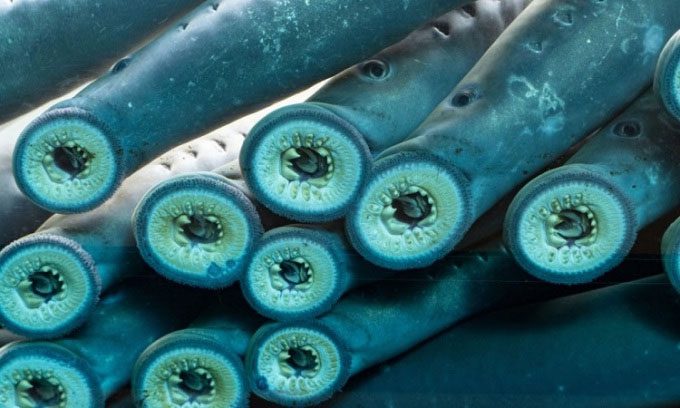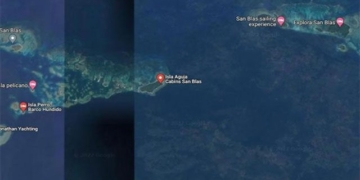The Pacific lamprey is an ancient fish belonging to the Agnatha group that evolved 450 million years ago, before the dinosaurs appeared.
The Pacific lamprey (Entosphenus tridentatus) primarily inhabits freshwater ecosystems and coastal waters in the North Pacific, ranging from California to Alaska, and across the Bering Sea to Russia and Japan. Their diet consists of the blood and bodily fluids of other fish species, including Pacific salmon, flounder, warbonnet, and Pacific char, according to Live Science.

The mouth structure of the lamprey helps it attach to prey to suck blood. (Photo: Marli Miller).
The lamprey belongs to the ancient jawless fish group that evolved over 450 million years ago during the Ordovician period (485 – 444 million years ago). There are approximately 40 species of lamprey still alive scattered across the globe. This eel-like creature existed in freshwater streams long before the dinosaurs and even trees appeared. They have survived at least four mass extinctions. Lampreys are a type of jawless fish, with their skeletons made entirely of cartilage. Instead of jaws, lampreys have a sucker-shaped mouth filled with teeth, allowing them to attach to prey, suck blood, and bodily fluids. According to scientists, they do not consume fresh meat.
Females can lay up to 200,000 eggs in nests and incubate them in freshwater for about 3 to 4 weeks. After the larvae hatch, they burrow under sediment and hide there for a decade. They emerge as nearly mature fish and migrate from freshwater to the ocean to feed, only returning to freshwater after a few years to spawn. Adult lampreys can grow up to 84 cm long and can travel hundreds of kilometers inland to find the perfect breeding and nurturing grounds.
The Pacific lamprey is a favored prey for many species of birds, mammals, and other fish due to their extremely fatty flesh, which contains three to five times the calories of salmon of the same weight. Therefore, they play an important role in freshwater and ocean ecosystems.




















































